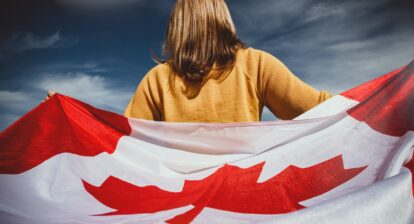October 16, 2015 – Canada and 11 other countries concluded the largest free trade deal ever. Good news or bad news for the arts and culture sector? It’s hard to say without the full text of the Trans-Pacific Partnership, but the available information doesn’t look too bad.
 The announcement of the Trans-Pacific Partnership came with a backgrounder on several economic sectors, but with no information as to the impact for the cultural sector. The technical summary released shortly after did however include a few precisions.
The announcement of the Trans-Pacific Partnership came with a backgrounder on several economic sectors, but with no information as to the impact for the cultural sector. The technical summary released shortly after did however include a few precisions.
- The Investment Chapter includes reservations under Services and Investment for existing and future programs and policies for key sensitive sectors, including with respect to cultural industries that aim to support, directly or indirectly, the creation, development or accessibility of Canadian artistic expression and content.
- The State-Owned Enterprises (SOE) Chapter includes an exception that protects the Canadian Broadcasting Corporation (CBC), Telefilm Canada and future SOEs involved in cultural industries.
- The Intellectual Property Chapter reflects key aspects of Canada’s copyright regime and is expecting to reinforce intellectual property rights in general.
- The Cross-Border Trade in Services Chapter also includes a broad reservation with respect to cultural industries that aim to support, directly or indirectly, the creation, development or accessibility of Canadian artistic expression and content.
International touring activites, into Canada and towards TPP countries, will be governed by the provisions of the Cross-Border Trade in Services Chapter. Whether the impact is positive or negative will depend essentialy on how “cultural industries” are defined in the agreement. If performing arts activities are included in the definition and are subject to some form of protection, it may make it more difficult for Canadian artists to tour abroad and for Canadian presenters to book foreign artists.
For example, when the North American Free Trade Agreement was signed, the United States interpreted the performing arts to be a cultural industry and the performing arts were consequently excluded from NAFTA. As a result, Canadian artists who tour in the U.S. must go through an exhaustive and expensive immigration process even if they are just going for a couple engagements.
The TPP could however be the light at the end of tunnel for touring artists: the United States is also part TPP trade zone and the TPP is consequently bound to supersede NAFTA. The question is: will TPP acknowledge the value of free trade in the performing arts sector or will it submit it to provisions related to the protection of cultural diversity? The future will tell. And we’ll make sure to tell you.
Frédéric Julien, CAPACOA
Previous and Recent News
Launch of the Presenters Capacity Building Program
Working Group Provides Comments on International Taxation



